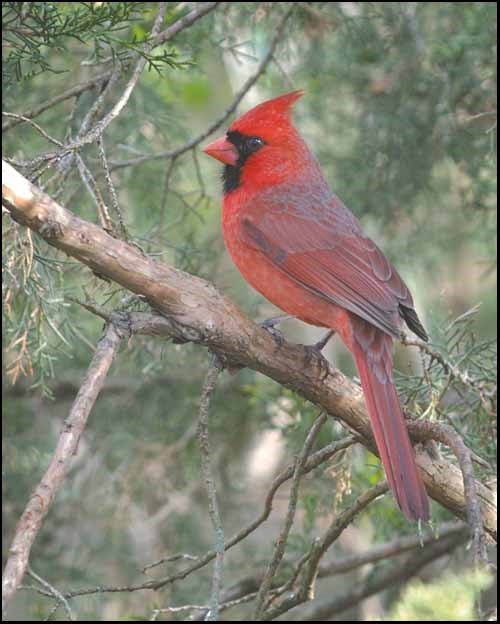Yorkton's bird enthusiasts have completed this year's tally of the species calling the area home.
The 2011 Christmas Bird Count was held on December 17 by a group of volunteers organized by the Yorkton Natural History Society.
The count, part of a North America-wide survey used to estimate bird populations in Canada and the USA, showed the number and species distribution of Yorkton's birds holding fairly steady since last Christmas. A total of 1,073 individual birds from 20 different species were spotted during the counting period in 2011 versus 1,118 individuals and 20 species last year.
The rarest bird spotted this year, said History Society President Geoff Rushowick, was a single male Northern Cardinal, likely one of a pair that has been sighted occasionally in the area recently. The species normally doesn't venture further north than South Dakota.
Also somewhat unusual was the sighting of four Mourning Doves and seven Eurasian Collared Doves. The Collared Doves, said Rushowick, are part of a local population of about 20 that grew from a single pair several years ago. The species was only introduced to North America via the Bahamas in the 1970s and continues to expand its range today.
A single Bald Eagle was among the birds spotted this year. It was the first seen during a Christmas Bird Count here since 2005.
One of the surprising trends of last year's bird count was the complete absence of Common Redpolls, which had been counted 20 times in 2009. That trend was reversed this year, with 54 individuals observed.
But the Pine Siskin, which was seen 141 times in the 2009 count, hasn't been sighted at all in the last two counts. Rushowick believes this year's unseasonably warm temperatures may be keeping the winter bird away.
The warm winter might account for the low sightings of several species, said the History Society president.
"I think what happens is, for some of the birds that we would see from the north, because it's warm they didn't make it down yet. That's why we haven't seen some of the species we normally do see."
The temperature during the bird count was -9 Celsius. Snow depth ranged from 10 to 35 centimeters.
The complete list of birds sighted this year is as follows.
Mallard (3), Ruffed Grouse (1), Bald Eagle (1), Rock Pigeon (159), Great Horned Owl (1), Downy Woodpecker (17), Hairy Woodpecker (5), Pileated Woodpecker (1), Blue Jay (4), Black-billed Magpie (13), Common Raven (149), Black-capped Chickadee (66), Red-breasted Nuthatch (1), White-breasted Nuthatch (7), Bohemian Waxwing (30), Dark-eyed Junco (1), Pine Grosbeak (19), Common Redpoll (54), House Sparrow (530), Mourning Dove (4), Eurasian Collared Dove (7), Northern Cardinal (1).
Twenty-six volunteers took part in the count this year, either by visiting popular bird habitats around the area or by watching a feeder throughout the day.
They were Bill Anaka, Brian Beck, Vern Brown, Jim Dicker, Pat Fletcher, Cheryl Fraser, Joyce Gardner, Bob Graham, Lorraine Harris, Lance Irvine, Ethel Kreklewetz, Sheldon Knoll, Joanne Loveridge, Joyce Muir, Kaarina Rahn, Gloria Rathgeber, Dorothy Riesz, Ray Riesz, Bonnie Rushowick, Geoff Rushowick, Patrick Rushowick, Dale Sharpe, Gary Shury, Dorothy Skene, Stan Williams, and John Young.



